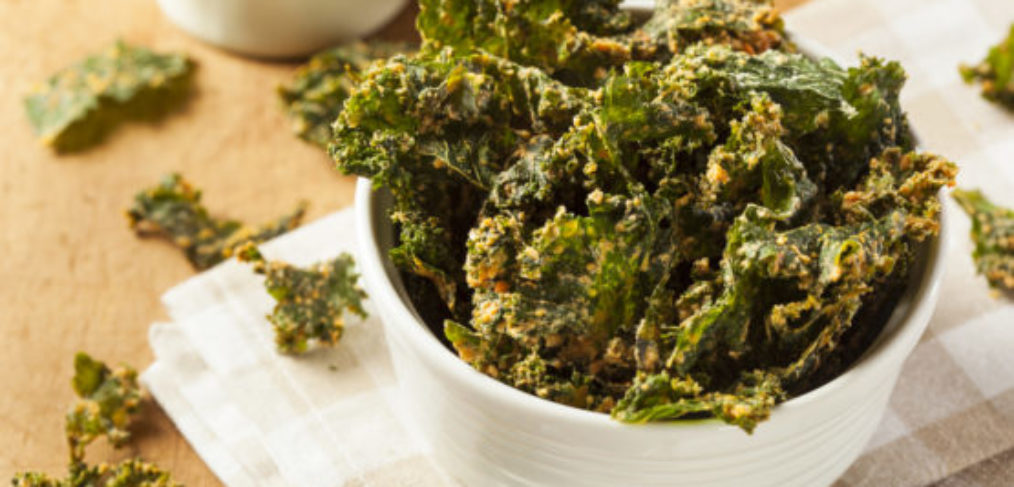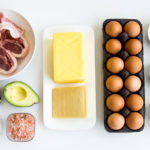How Healthy are Those Healthy Snacks?

Are Vegan, Nacho “Cheeze” Flavored, non GMO, soy, dairy and nut-free, USDA Organic Certified kale chips all they’re cracked up to be?
Gone are the days when the line between healthy and so unhealthy was a glaring red divide.
Think back to a time when one might wander into any run of the mill grocery store and could either opt for one of two choices:
- Go down the into the small health food section (a concept I always found odd; if that was health food, what would the rest of the contents in the store be classified as, anyway?) or produce section to buy real food
- Peruse the rest of the store and stock up on packaged, processed items, often with their best feature being convenience
Back then, it was hardly even conversation worthy to consider whether steamed broccoli with olive oil versus trans-fat rich potato chips were the healthier choice.
Now the lines have blurred tremendously.
Forget about the items labeled as being “keto friendly” or “Paleo – approved”; let’s just focus on those we perceive to be healthy.
- Organic ‘Nacho-Cheeze” Flavored Kale Chips
- Gluten Free Tamari Edamame Puffs.
- Non GMO Yam Crisps.
- Oregon Tilth Certified Chick-Pea Bites.
- Fair-Trade Coconut Flour Chocolate Wafers.
What else have you seen?
Let’s dig into this a little.
We know that the labeling we see on our foods is governed by the USDA.
And we also know who backs the USDA (1); amongst them are ConAgra, General Mills, Kellogg, the National Dairy Council, Coca-Cola, Kraft Foods, Nestlé, and PepsiCo.
So what does it really mean when we see the word healthy on a label?
Foods that “are not low in total fat, but have a fat profile makeup of predominantly mono and polyunsaturated fats; or contain at least ten percent of the Daily Value (DV) per reference amount customarily consumed (RACC) of potassium or vitamin D” are considered healthy.
No regulation to determine the amount of sugar, the presence of corn syrup or vegetable oils (hydrogenated or not), amount of processing and, on a most basic level, nutrient density.
This begs the question, as so eloquently positioned in a recent article in Vogue (3), “is the new breed of healthy snack food actually healthy, or just addictive?”
The author mentions navigating her young child’s stroller around her local Whole Foods and coming across one such ‘healthy’ snack labeled as “Vegan, White Cheddar ChickPea Puffs”, whose package stated that the contents were “USDA Organic, kosher, soy-free, dairy-free, nut-free and non-GMO”.
Do all these qualifications mean this is a healthy item to give our youngsters? Or to eat ourselves?
While eating a bag of USDA Organic Certified, kosher, soy-free, dairy-free, nut-free, non-GMO crisps of some sort or other on a rare occasion certainly isn’t going to create the demise of a healthy human body all on it’s own, what happens when food byproducts such as these become the mainstay of what humans consume?
Common sense dictates a general trend of eating more things from bags, boxes, mixes or cans is less than ideal versus fresh, local and in season.
Another point of contention to consider is how much the ingredients, all of which are completely legal to use and approved for human consumption by the USDA, may do more damage long term as a result of what is, in effect, a domino-like effect caused not only by added addictive sugars but also potentially by artificial flavors, colorings and dyes.
Dr. Mark Schatzer wrote The Dorito Effect (4) in 2015, in which he posits that it is the growing presence of fake flavorings which are responsible for our country’s obesity rate.
In the Vogue article, the author closes with reference of another example of another product which was about to make its debut: “100% Vegan Ch’eesy Mac and Ch’eesy Bacon Mac, a plant-based take on a classic comfort food that is shelf-stable, ready in one minute, completely free of nuts, dairy, oil, trans fat, cholesterol, GMOs and artificial flavors”.
How’s that for a mouthful?
Do we really want to choose to eat things that need that much qualification?
If we were to eat real, fresh, whole food, we wouldn’t need all that verbiage; how much wording do you see when you buy a bunch of kale, or a piece of wild black cod or a bottle of olive oil?
Cut to the chase: sure, a baked, organic, non GMO yam crisp made with coconut oil is a better choice than a conventional, white potato chip deep fried in hydrogenated oil.
Have it once in a while.
Once in a while, being the key takeway.
But please, don’t do your body (or your kids’ and family’s) bodies the disservice of opting for packaged items marked as healthy as a regular occurrence.
It’s each and every one of our responsibilities to nurture and nourish ourselves through eating real food, moving and sleeping… and then, to allow our leading by example to facilitate better options for those around us.
- http://www.eatdrinkpolitics.com/wp-content/uploads/AND_Corporate_Sponsorship_Report.pdf
- https://www.fda.gov/Food/GuidanceRegulation/GuidanceDocumentsRegulatoryInformation/ucm521690.htm
- Adler, Tamar. “Grab And Go?” Vogue, Feb. 2019, pp. 156–177.
- Schatzker, Mark. The Dorito Effect: the Surprising New Truth about Food and Flavor. Simon & Schuster Paperbacks, 2016.





